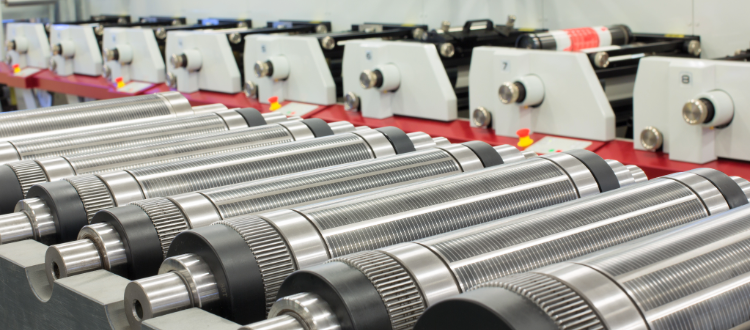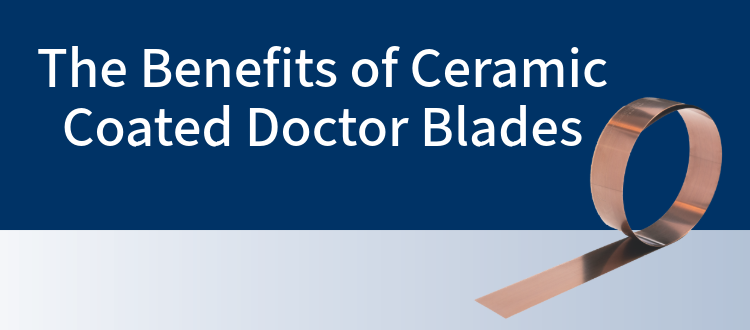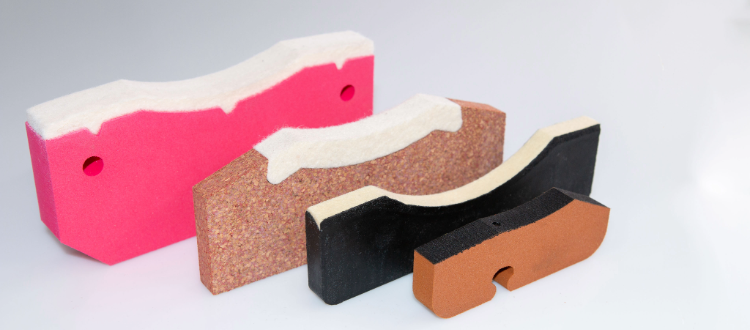I hate to tell you this but you may have a potentially serious condition that needs professional attention. Even worse, it may be happening on a couple of your flexo presses right now and your press operators are thoroughly baffled about what to do. It’s called back doctoring. And no, your chiropractor isn’t going to make it better with a few adjustments.
You can’t blame your operators though: it can be a tricky condition to diagnose, and easily be mistaken for a leaky end seal or incorrect use of your doctor or containment blades. But on the upside, you can diagnose and fix this problem with tools and parts you have on hand or can easily obtain. You just need to take a few minutes for a proper diagnosis.
Obvious symptoms of back doctoring
Back doctoring happens when ink not used for printing —that’s the ink not transferred from the anilox roll to the printing plate— fails to return to the ink chamber. This happens in a couple of ways.
On the front side of a CI press, the doctor (metering) blade shears unneeded ink off the anilox roll before it reaches the printing plate, but this is not always a perfect process. Ink that is not sheared off can build up on the containment blade creating a pool of ink with no place to go — until it builds up enough volume to leak past the end seals.
On the back side of the press —places that are not normally inspected all that often— a containment blade that’s metering ink as it contains ink creates a different problem. Gravity prevents the ink from pooling, so it forms what I think of as “stalactites” that dry and create pathways for wet ink to run down and land in places where you don’t want it.
An issue here is how deceptive a back doctoring problem can be. On the front of a CI press, back doctoring can look, without proper investigation, like an end-seal leak. Many times, an operator will dutifully change the end-seals only to have the problem recur. So they call us to say we have bad seals and they leak. Meanwhile, stalactites growing underneath the backside chamber units can go unnoticed for days, sometimes over several jobs, eventually leaving an impressive mess to clean up. Neither is good for the press nor the work being run on it. Both lead to wasted ink, along with the time needed for cleaning up ink that lands on the floor or the press.
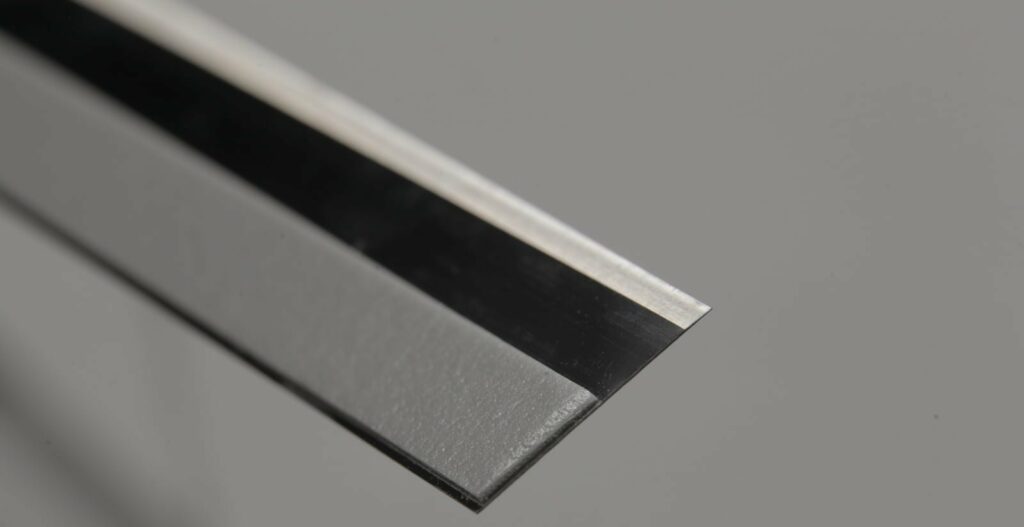
Causes of back doctoring
So how do these things happen? As with most things in life, details matter.
One thing we see is shops using doctor blades in place of containment blades. After all, they look a lot alike, so why not? Because they can be actually very different. A containment blade should have a wider contact area against the anilox roll than a doctor blade, have a radius tip, and be more flexible across its width. The flexibility lets the blade bend slightly into the anilox roll —a process called hydraulic lift— to let ink re-enter the ink chamber at all press speeds. In contrast, a doctor blade should have a beveled or lamella tip and be laterally stiffer so no ink passes beneath the blade, assuring proper metering across the anilox roll. When the stiffer doctor blade is used in place of a containment blade the ink doesn’t return to the chamber and back doctoring starts to occur.
Doctor blades themselves can be a problem if they are worn and no longer metering ink correctly. Then too much ink can get past them and wind up overwhelming the containment blade. Because both blades are constantly wearing, the best practice is to replace both doctor and containment blades at the same time to reduce the likelihood of problems due to either blade. In fact, some busy shops make swapping both blades part of standard cleaning and maintenance procedures.
Another consideration is the preset blade angle. The ink chambers on many newer presses are designed so a doctor blade will contact the anilox roll around 35 degrees to meter the amount of ink placed on the anilox roll. A containment blade will touch the roll less than a 30 degree angle which is better for wiping and for hydraulic lift. Assuming the correct type of blade is used in each location and changed regularly, back doctoring can be largely eliminated. The message here is use the right blades and be sure they are installed correctly.
Two other things. Many press operators take a shortcut approach to on-press problems by increasing the pressure on the anilox roll. This quick fix can deliver better results on some jobs, but it makes blades and even anilox rolls wear faster and can actually increase the chances of back doctoring taking place.
Then there’s ink viscosity. An ink that’s even a bit too thick is more likely to contribute to a back doctoring problem than a thinner ink. Thicker inks may not meter quite as smoothly across the anilox roll and can be more likely to resist flowing under the containment blade and back into the ink chamber. This may require the ink be thinned or that more pressure be applied to the anilox roll. Thinning is okay, but if you increased pressure on the roll just be sure to back it off when running a thinner ink.
But wait! There’s more!
Lastly, a couple of fine points that are with mentioning. Because the containment blade’s job is a bit less demanding than that of the doctor blade they don’t necessarily have to be made of the same material. Steel, as opposed to plastic, is still the best material, and is more durable. But while a doctor blade should be made of high quality steel it is okay to take a step back in quality for containment blades. Still, I usually recommend changing both types of blades at the same time, or at least swapping out the containment blades during every other doctor blade change. It’s better than having problems on press or wasting time doing clean up.
Back doctoring, and how to address it, is one of the most common issues we at Provident Group are asked about. While it is a relatively easy problem to solve, it’s important to understand all the details and use the right parts to create a long lasting solution and to understand how to avoid it in the future. Your ink system is your pathway to profitability, so contact us to learn about the best practices for keeping your flexo presses running reliably and profitably.
Are you in search of outstanding pressroom solutions? We are your immediate connection to premium OEM quality, providing unparalleled service and support. Feel free to request your free sample today.
